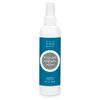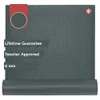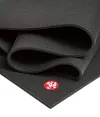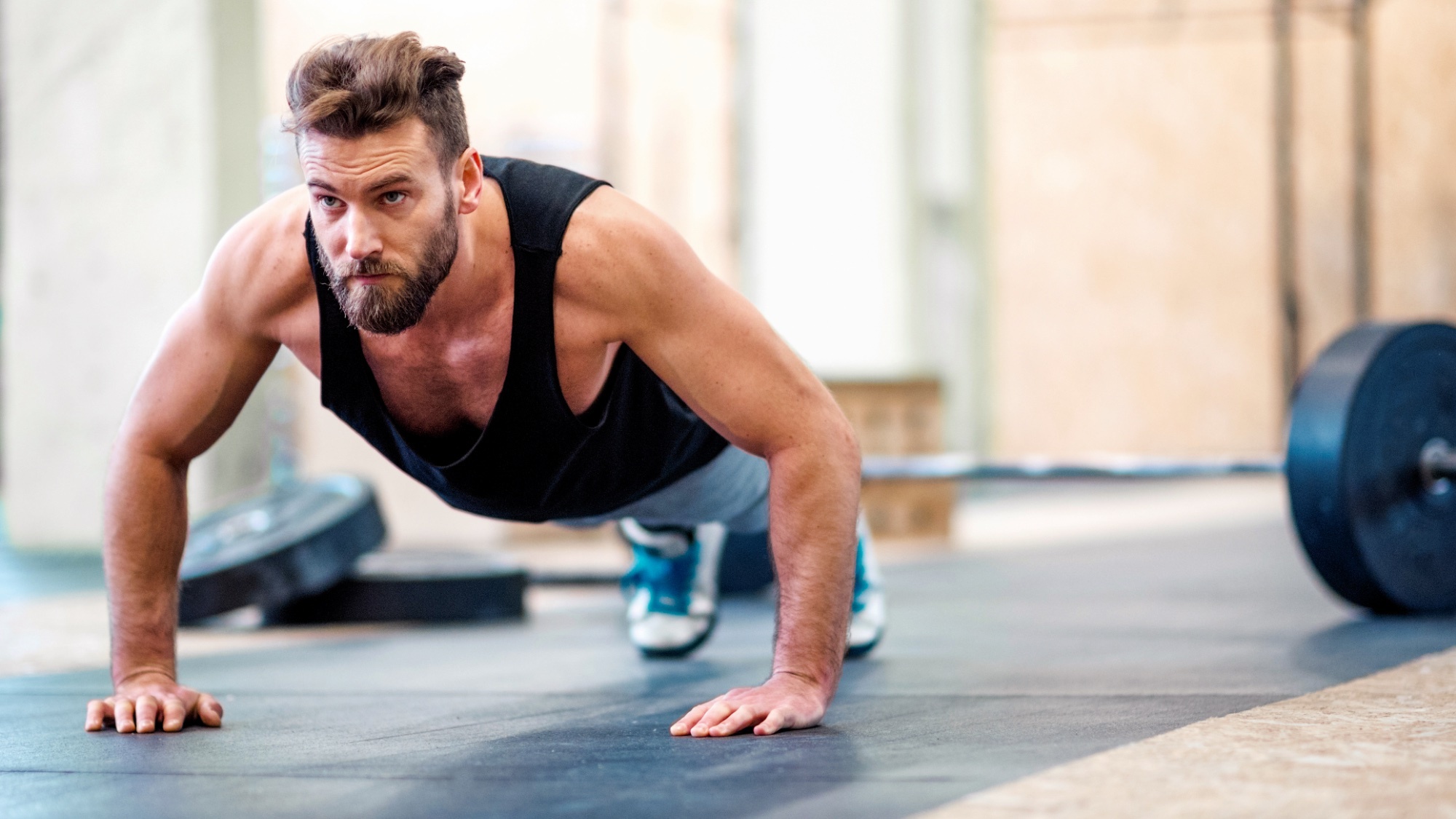
Forget chest presses, the overhead press, or standard push-ups for one moment because crossbody push-ups hit your deltoids, triceps, pectorals, core and legs without weights.
To do the bodyweight exercise, simply perform a push-up on one of the best yoga mats while extending one leg under and across your body and gently twisting to one side. Easy, right? Having completed 50 reps a day for one week, I can confirm the upper body exercise is anything but “easy.”
If your push-ups need a facelift, give these a try. Here’s how to do crossbody push-ups, the benefits and what happened when I added the exercise to my upper body workouts during a one-week fitness challenge.
Do you need rest days for push-ups?
Everyone responds to training stimuli differently, so what might be considered "overtraining" for one person might be pretty standard for another. That said, doing one exercise for high reps every day without rest isn't ideal in the long term. Your muscles will need time to recover from heavy-loading resistance training and you also don't need to do push-ups every day to see results for your upper body.
Several times per week is enough to strengthen your arms, chest and shoulders, and I recommend building foundational strength first before attempting crossbody push-ups.
I enjoyed spending time on these, practicing in the mirror and seeing my form progress throughout the week, but I don’t recommend them every day long term; variety will help keep your muscles challenged and your mind stimulated.
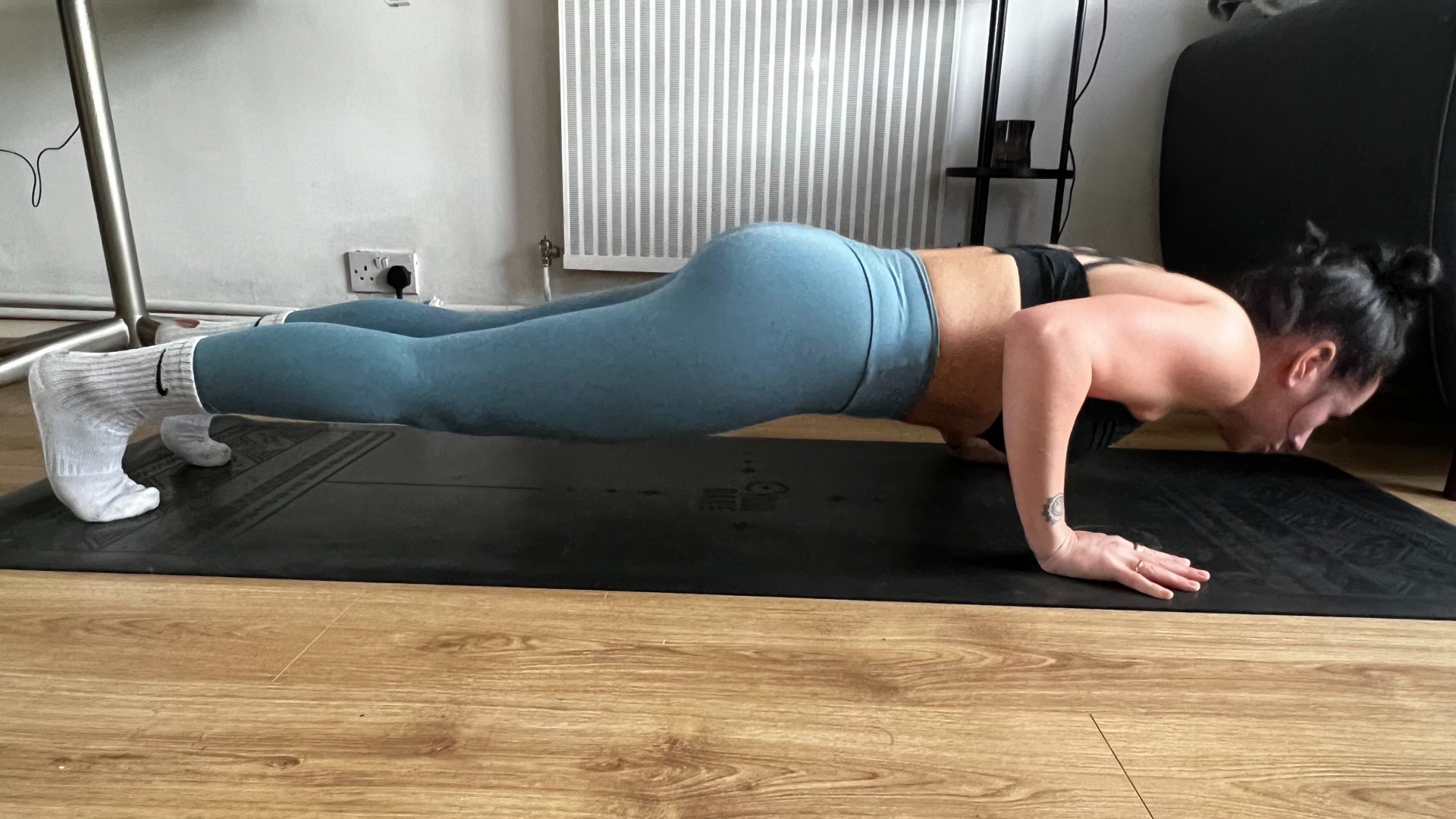
How to do crossbody push-ups with good form
I picked this beauty up from Firefighter Functional Fitness, and it blew my mind how I hadn’t considered this push-up variation already. The team calls it a “great core workout,” but let’s not forget the advanced push-up primarily hits your anterior deltoids (the fronts of the shoulders), pectorals (chest muscles) and triceps.
Get instant access to breaking news, the hottest reviews, great deals and helpful tips.
Here’s how to do it:
- Start in a push-up position with your shoulders slightly wider than shoulder-width apart and stacked over your wrists.
- Brace your core, then bend your elbows and lower your chest toward the floor.
- As you lower, turn your torso to the right and kick your left leg under your body and through to the right side.
- Keep your elbows tracking back and left leg extended, pause, then push back up as you return to the starting position.
- Repeat on the other side.
The straighter your moving leg, the harder the exercise will become, and you can bend your leg to reduce the intensity on your hips and quads if needed.
I did 50 crossbody push-ups every day for one week — here’s what happened
Here's what I learned.
These set my torso alight
Get ready to feel 360-degree core activation during this exercise as your obliques, lower back and hip flexors see some action. For me, the move felt similar to bicycle crunches using a gentle and controlled twisting motion. Sure, the move still hits your chest and triceps, but the whole torso gets some love from this push-up variation. Day one and 50 reps in, I already knew this would be a fiery challenge.
I could increase intensity on each side
I like to think I have strong push-up game, but this one knocked me for six. Not only do you focus on lowering your chest, but you’ll also tap the outside of your hip to the floor as you extend your leg away from you. The emphasis, naturally, changes as you twist, as you no longer lower your chest to the floor from a front-facing position.
Instead, you emphasize one side of the body more at a time. For example, as you twist to the right, you’ll feel more tension on your left side, including the left shoulder, pec major and tricep, as your weight shifts. I loved that, unlike standard push-ups, I could increase the intensity on each side of my body at one time, immediately noticing differences between both sides. In my case, my left side felt much weaker than my right, and the move dominated my triceps, leaving them feeling far more tired than usual.
My form took some work
The beauty of the exercise is that your whole torso gets involved, plus the hip flexors and quads. It quickly became a full-body exercise and a test of my core and hip strength as I focused on keeping my leg elevated while I moved. The transition from side to side also took a surprising amount of flexibility as I attempted to keep my moving leg straight while testing my upper body strength as I fought to keep my elbows tracking back and form tight.
I did these reps in the mirror to keep my form tight and hold myself accountable, taking rest as and when I needed it, and ensuring I worked the correct muscles without relying on my lower back. It took longer than 50 reps usually would (talk about ego death), but at least I could focus on quality first.
Verdict
Crossbody push-ups could slot into a core workout just as much as an upper body workout or chest day routine, but I strongly recommend ticking off standard push-ups for 10-15 reps before trying advanced variations. If you struggle to fully lower your chest during standard push-ups, it’s worth focusing on building the necessary full range of motion and form beforehand.
As for me, trying to wash my hair after this challenge became just as much a task as the push-ups (almost).
More from Tom's Guide
- I did yoga every day for a month for the first time in 10 years — here's what happened to my body
- You don’t need crunches to build a stronger core — just 10 minutes and 5 exercises
- Forget Russian twists, I did Russian push-ups every day, and here's what happened

Sam Hopes is a level 3 qualified trainer, a level 2 Reiki practitioner and fitness editor at Tom's Guide. She is also currently undertaking her Yoga For Athletes training course.
Sam has written for various fitness brands and websites over the years and has experience across brands at Future, such as Live Science, Fit&Well, Coach, and T3.
Having coached at fitness studios like F45 and Virgin Active and personal trained, Sam now primarily teaches outdoor bootcamps, bodyweight, calisthenics and kettlebells.
She also coaches mobility and flexibility classes several times a week and believes that true strength comes from a holistic approach to training your body.
Sam has completed two mixed doubles Hyrox competitions in London and the Netherlands and finished her first doubles attempt in 1:11.





